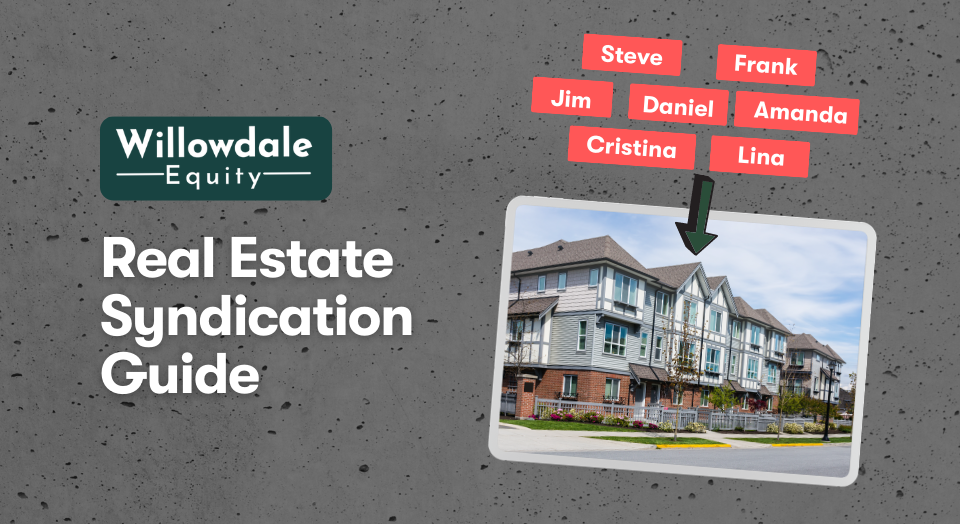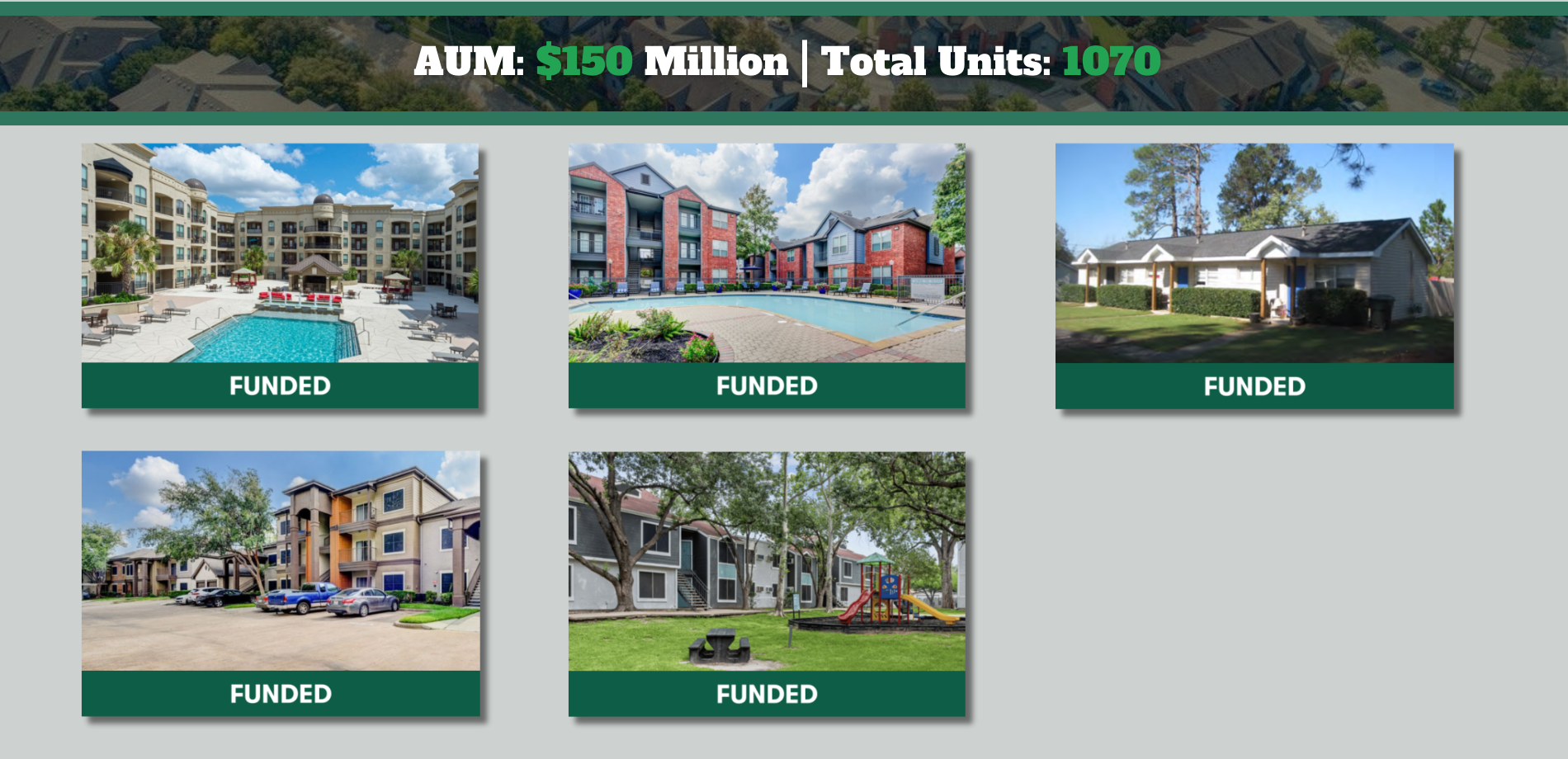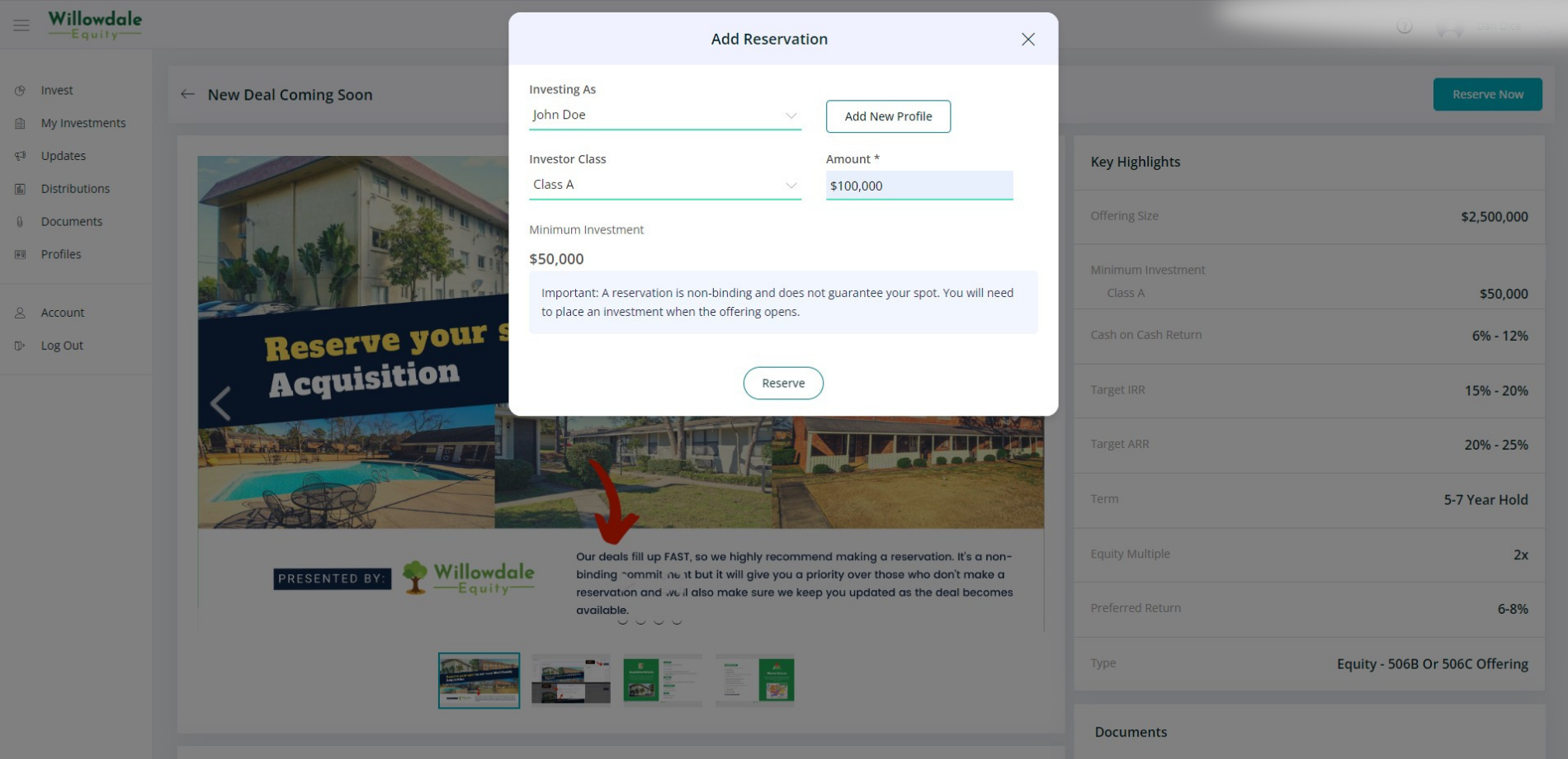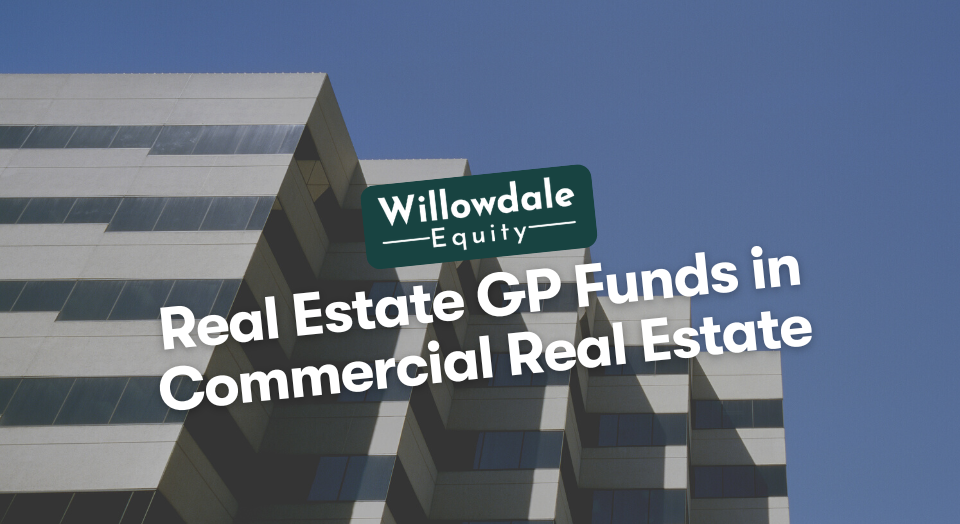
Real Estate Syndication: The Passive Investors Guide
Real estate syndications are among the best investment vehicles for busy, hard-working professionals. Investing in a syndicated deal provides the luxury to investors of not having to deal with all the 2 am calls to fix the toilets, the day-to-day operation, and all the other headaches that come with large-scale rental real estate.
In this article, we’ll discuss how a real estate syndication works, who can invest in them, how money is made, funding methods, where to find them, the advantages and disadvantages, and much more.
Key Takeaways
-
Real estate syndications offer many attractive things, such as substantial tax benefits, preservation of capital, steady cash flow, and strong risk-adjusted returns, all in a 100% passive role
-
Real estate syndications operate as a partnership between the general partners who actively operate the project and limited partners, the investors who contribute capital to the deal in a completely passive role.
-
Passive investors are privately purchasing direct shares in the LLC (limited liability company) that owns the real estate asset, which enables them to access all the advantageous tax benefits as opposed to investing in a public REIT, which doesn’t offer this same ability.
-
The true passivity of leveraging other investors’ resources and capital to get involved in more considerably sized deals offers large economies of scale and makes for efficient operations.
What is Syndication in Real Estate? - (Syndication Real Estate Definition)
A real estate syndication is an efficient way of pooling a group of investors’ resources together to purchase a considerable commercial real estate asset that each investor would likely be unable to purchase and operate as an individual.
The enables passive investors in a real estate syndication are referred to as the limited partner, and the operator of the real estate syndication is referred to as the general partner, as well as the sponsor or the syndicator.
Based on how much each passive investor invests in the deal dictates how much equity ownership they have. Having private equity ownership in the deal enables you to share in the income, losses, credits, and deductions that private ownership has to offer.
The real estate syndication structure enables the syndicator to oversee operations, put the deal together, secure financing, and execute the business plan, and the group can leverage its connections, experience, and expertise. This is the syndicator’s contribution of resources, while the passive investor’s contribution of resources would be to strictly provide capital to the deal and remain completely passive.
Let’s now look at how real estate syndications operate, breaking down how sponsors and investors make money in a deal.
How Real Estate Syndications Operate
Real estate syndications operate as a partnership between the general partners who actively operate the project and limited partners, the investors who contribute capital to the deal in a completely passive role.
The general partners will have identified a real estate property, completed initial financial and physical due diligence, performed underwriting, negotiated, signed the contract, and posted a deposit on the underlying commercial real estate asset. Attorneys will help draft a PPM (private placement memorandum), so the general partners can allow outside investors to invest.
The minimum investment in a real estate syndication is $50,000 to $100,000 for most groups, but this could change depending on the deal or the group offering the investment. For example, for us here at Willowdale Equity, we have a $50,000 minimum investment threshold.
Once passive investors review the real estate syndication offering documents, watch the opportunity webinar, speak to the general partners, sign the required documents, and wire in their funds, they are now officially equity partners in the deal.
Upon takeover, the on-site and day-to-day operations will be managed by a property management company, which might be a third party, or by using the general partner’s in-house property management company.
Asset management will be in place to make sure that the property operations are going according to the business plan and property proforma. The asset manager, an in-house role of the general partners, will be actively communicating with the property manager to ensure performance and that property management is hitting its targets.
There will also be construction management to oversee and manage all the renovations at the property, and depending on the scope of work, this role can be quite long and daunting. The general partners also coordinate and deal with the loan on a refinance, preparing the asset to be sold and the ongoing tax preparation and schedule K-1 that each investor receives around mid March to early April of each year.
How General Partners and Limited Partners Make Money
Throughout the hold period of the deal, which on average is 5 to 7 years, general partners and limited partners make money in several ways.
- Cash Flow Distributions: Limited partners receive cash flow distributions monthly or quarterly. On most deals, a preferred return gives limited partners a cash flow priority up until a particular return hurdle. In some instances, general partners will share in the excess cash flow over and above the met return hurdle.
- Liquidity Event #1 – [The Refinance]: Limited partners will also share in two liquidity events; the first is a refinance, where they will get a large portion of their initial capital contribution returned, tax-free. This is a tax-free event because a loan is not a taxable event. For example, if you invested $100,000, a successful refinance may enable you to get back a percentage of that capital and still have the same equity in the deal, with fewer chips on the table.
- Liquidity Event #2 – [The Sale/Exit]: The second liquidity event is the sale/exit. This is when the asset is sold, and the net sale proceeds are split up amongst general and limited partners based on the predetermined equity splits. If any additional waterfall return hurdles need to be met, that changes those profit splits.
- Fee Income: These fees are paid to the general partners to help them cover or recover costs associated with operating some of these specialized roles in the deal. Some example fee income includes the acquisition fee, the asset management fee, and the construction management fee.
Real Estate Syndication Example

To provide an example of a real estate syndication, there was a 216-unit multifamily apartment community located in the Rosslyn sub-market of Houston, with great upside to add value, kind of like the one that we purchased in Novemeber of 2023. The sponsor would underwrite the deal, negotiate the terms with the seller and broker, put down an earnest money deposit out of pocket, get the financing lined up, and then allow passive investors to invest in the deal.
After all, the capital is raised and the deal is successfully closed, the sponsor would initiate takeover of the property, start the renovations, and begin operations. Every quarter, passive investors would receive a distribution check from the property’s cash flow based on how much equity they own in the deal.
Then anywhere from 18-36 months from takeover, which it likely would take to complete the renovation plan fully, the sponsor achieved higher market rents and hit their projected net operating income targets. This would allow them to go back and get a new loan based on the new market value.
After paying off the original loan, this surplus capital will go back to investors; in this case, that meant 50% of their initial $100,000 investment was returned. They still have the same interest/equity in the deal moving forward and continue receiving cash flow distribution checks. As rents continue to increase year over year, naturally, the property continues to perform, and the value appreciates, the sponsor group decides to sell at year 5.
The net proceeds from the sale are split 70/30, 70% being the passive investors and 30% being the general partners. That 70% is split amongst passive investors based on their interest in the deal. The total return for this example includes the cash flow distributions over the 5-year hold of the property, the capital returned to investors at the refinance, and the sale profits split amongst investors, resulting in a cumulative 2X multiple for the passive investors.
This represents a double up of their capital over 5 years, while earning cash flow distributions annually that we’re tax-sheltered by using bonus depreciation. The sponsors then prepare the final tax return for the partnership, issue a schedule K-1 form to each investor, and the real estate syndication is complete.
Now that we’ve walked through an example syndication, let’s look at the origins of private real estate investing and who can invest in it.
Can Anyone Invest in Private Real Estate Syndications?
Before we break down who can invest in a private real estate syndication, it’s essential to understand where things started from a securities law perspective to know how you can invest in a syndication today in 2024.
Securities Act of 1933: This legislation was enacted by the federal government to respond to the 1929 market crash. The act aimed to instill confidence back in the markets by requiring companies to register with audited financials and provide other details about the company. The liability was put on these companies if they misrepresented any statements in their securities filing, effectively bolstering investors’ transparency.
JOBS Act of 2012: The JOBS Act, short for Jumpstart Our Business Startups, was a law passed through bipartisan support in Congress in April 2012. The act aimed to lessen securities and exchange law regulations on smaller businesses to aid growth. Previously it only allowed “qualified purchasers” to purchase equity or a security, which was an investor with a $5,000,000 plus net worth.
The rule effectively opened up the opportunity to raise capital from an unlimited amount of “accredited investors” and a certain number of non-accredited investors with strict guidelines that must be met.
Additionally, investment offerings are now able to be marketed/solicited. Real estate is a high-barrier, high-cost, capital-intensive industry, which led to an explosion of growth for the sector due to these laws. No longer was the private equity reserved for the ultra-wealthy, but now more investors can get more exposure to a historically secure performing asset class.
Real estate syndications provide a unique opportunity for investors to pool their resources and access high-quality properties that may be out of reach individually. By partnering with experienced sponsors, you can enjoy the benefits of real estate ownership, such as passive income and portfolio diversification, without the day-to-day management responsibilities.
Daniel Di Cerbo Tweet
Now that we understand the origins story of capital raising for private real estate investments lets now look at the two investor profiles that can invest in a real estate syndication:
Accredited Investor: This is an individual with a net worth of $1,000,000, not including their primary residence, or earns $200,000 a year for the last two years with the expectation of making the same.
If you and you and your spouse earned $300,000 combined for the previous two years with the expectation of making the same, this would also qualify you as an accredited investor.
Non-Accredited Sophisticated Investor: A sophisticated investor is a non-accredited investor with some knowledge and experience in investing to some degree.
The distinction here is that this investor doesn’t mean the net worth or income qualification of the accredited status but can show some history of investing to prove that they are “sophisticated” and understand the risks associated with investing.
It’s important to note that not all real estate syndication investment offerings are open to both accredited and non-accredited investors. Most opportunities are only available exclusively to accredited investors for various reasons, such as being able to market/solicit the specific deal opportunity through a 506 (c) offering.
But each deal is different, which through a 506 (b) offering, non-accredited investors are eligible to invest in, as we have here at Willowdale Equity. But you will know whether the real estate sponsor will be taking investment funds from accredited, non-accredited, or both before the deal is presented to you.
How to Invest in Real Estate Syndications

There are different ways to fund your investment in a real estate syndication. Each investor’s personal financial structure and goals will dictate how they go about it.
The following are some of the ways to fund your syndication investment:
- Cash
- Self-Directed IRA (SDRIA)
- Solo 401K
- QRP
- LLC
Average Minimum Investment= $50,000-$100,000
Most real estate syndications allow a $50,000 minimum to start, and many real estate investors elect to invest through a self-directed IRA. The SDRIA enables the investor to take control and self-direct their IRA funds into real estate and take advantage of the benefits of a ROTH IRA account which would allow them to pull distributions tax-free post-retirement.
Raising Money for Real Estate Syndication
Raising money for a real estate syndication is a challenging task. It requires a lot of time and focus, which could otherwise be put towards underwriting, structuring, and creating more deals. But it’s important to remember that raising capital is necessary, for there’s no deal without it. This is why capital raising is the focal point for most real estate sponsors as their ability to close quality deals and more significant sized deals, one of their biggest challenges is raising capital promptly for that deal.
A syndication’s capital raising component is a value-add for all the passive investors participating in the investment offering. This is because without the sponsor bringing all the investors together, pooling everyone’s capital and resources, the investment opportunity would seek to exist for both the sponsor and the passive investor.
The primary source of capital raised for a syndication is from high-net-worth individuals, but several others are noted.
The following are a few other sources of funds in a syndication:
- High Net Worth Individuals (Accredited Investors)
- Non-Accredited Sophisticated Investors
- Real Estate Funds (Private Equity)
- Pension Funds
- Endowment Funds
Let’s now look at the projected returns and hold period from an apartment syndication.
Apartment Syndication Investing Projected Return and Hold Period
Every syndication offers different return projections and hold periods, as the term “deal dependent” indeed does apply. To give more context to some return expectations and hold periods for investing in apartment syndications, the following can be noted:
- Equity Multiple: The target equity multiple could be 1.5x to 2x, which would represent a 50% to 100% ROI or as much as a double-up of your investment throughout the entire hold period.
- Cash on Cash: The cash on cash return, which is the annual cash return measured against the capital you contributed to a deal, is somewhere between 5% to 8%. Cash flow is generally at its lowest on a return basis at property takeover. It grows over time as the sponsor further makes physical and operation improvements, enabling the property to yield more cash flow.
- Internal Rate of Return (IRR): A strong IRR for an apartment syndication would be somewhere between 12% to 15%. The IRR is a return metric that factors in the time value component of the real estate investment, which means the speed of returns highly influences it.
- Hold Period: Most hold periods for an apartment syndication is for 5-7 years, although this can be as short as a few years or as much as 10 years.
Tax Advantages of Syndicated Real Estate
For some, the tax advantages of syndicated real estate are the only thing they need to persevere their capital. Passive investors are privately purchasing direct shares in the LLC (limited liability company) that owns the real estate asset, which enables them to access all the advantageous tax benefits as opposed to investing in real estate through a public REIT, which doesn’t offer this same ability.
The largest tax advantages come from performing a cost segregation study at the investment property, which allows the syndication to capture a large amount of the “paper losses” from deprecation in the first year of ownership. The depreciation will far exceed the net cash flow generated from the property, which allows those losses to be carried forward year over year, resulting in the tax sheltering of the cash flow distributions paid out to investors for most of the hold or the entire hold period.
All the income, expenses, deductions, and credits are passed through to each passive investor based on their ownership in the LLC. You are then issued your schedule K-1, which shows how much of the income, losses, deductions, and credits are yours for that particular tax year. You would then take this to your CPA and file your taxes at the individual level.
Additionally, if you qualify for “Real Estate Professional Status”, you can take further advantage of the passive losses you received from your K-1 to leverage these losses against your active income.
How to Find Real Estate Syndication Deals
Since the JOBS Act law was passed in 2012, access to privately syndicated deals has grown exponentially. Building relationships with one or a few private real estate sponsors/firms will allow you to get comfortable with the process, help you better understand the types of deals being presented to you, and nurture a relationship with a group you trust. Here at Willowdale Equity, we allow select investors to invest alongside us in value-add multifamily properties.
You could consider building a relationship with one or two sponsors to get exposure to deals in non-correlated markets to diversify your capital. Whatever you decide, it’s best to get on a deal sponsors list and start with that first call to initiate the process.
Let’s now look at some of the advantages and disadvantages of passive investing a syndication.
Advantages and Disadvantages of Investing Passively in Real Estate Syndications
Passively investing real estate syndications, as I’ve spoken about earlier, has many advantages compared to other asset classes and investment instruments. Below are some of the advantages and disadvantages of syndicated real estate investing.
Advantages
- Tax Advantages
- Low Investment Minimums
- 100% Passive
- Capital Preservation
- Appreciation
- Cash Flow
- Hard Asset
- Outpaces Inflation
Disadvantages
- Illiquid Investment
- Less Control
Let’s now look at the best ways to evaluate CRE syndication deals as a passive investor.
Evaluating Commercial Real Estate Syndication Deals
Evaluating commercial real estate syndication deals is pretty straightforward once you understand how they operate, how to fund a deal, and how to analyze the investment opportunity based on the resources the real estate sponsor provides.
Some of the resources you would use to evaluate the investment offering would be the following:
- Investment Deck and Deal Summary
- Investment Opportunity Webinar
The investment deck and deal summary will detail the following:
- Purchase price
- Asset type
- Location
- Market fundamentals
- Business plan, Renovation budget, and scope of work
- Capital structure and Debt terms
- Sponsor team
- Investment classes, Minimum investment, How to fund, and Funding timelines
- Projected return expectations and hold period
All the details above will help you understand everything you need to know about the asset, the market, and the business plan for the asset. The 1hr investor webinar is where the opportunity evaluation becomes clearer, as the sponsorship team will explain the structure and profit splits in detail, highlight everything spoken about in the deck, and answer any questions for investors.
Frequently Asked Questions About Syndication Real Estate
Real estate syndications are a rather lower-risk investment strategy, but the level of risk changes on a deal-by-deal basis. Things that could affect the risk level could be the local market, the asset type, the condition of the property, the investment target, the business plan, and much more.
The general partners and limited partners own the property in a syndication. The general partners are the deal’s operators, and the limited partners are the passive investors in the deal.
The minimum investment requirement in real estate syndication varies from sponsor to sponsor and deal to deal. But as a general idea, most real estate syndication has a minimum investment requirement of anywhere from $50,000 to $100,000.
Real Estate Syndication - Conclusion
Real estate syndications offer many attractive things, such as substantial tax benefits, preservation of capital, steady cash flow, and strong risk-adjusted returns, all in a 100% passive role. For some investors, syndication might allow them to diversify their capital from other investment instruments and get exposure to different asset types, different markets, or different sponsors.
The true passivity of leveraging other investors’ resources and capital to get involved in more considerably sized deals offers large economies of scale and makes for efficient operations. Enabling investors to share in all the great things commercial real estate offers without being subjected to the high activity, focus, and expertise that these real estate assets require daily.
If you’re looking to access private multifamily syndication investment opportunities across the southeastern United States, apply to join the investors club here at Willowdale Equity today.
Sources:
- Investor.GOV, “Rule 506 of Regulation D“
- SEC.GOV, “Accredited Investor“
- Cornell Law, “Securities Act of 1933“
The Willowdale Equity Investment Club is a private group of investors that are looking to passively grow their capital and share in all the tax benefits through multifamily real estate investments.










